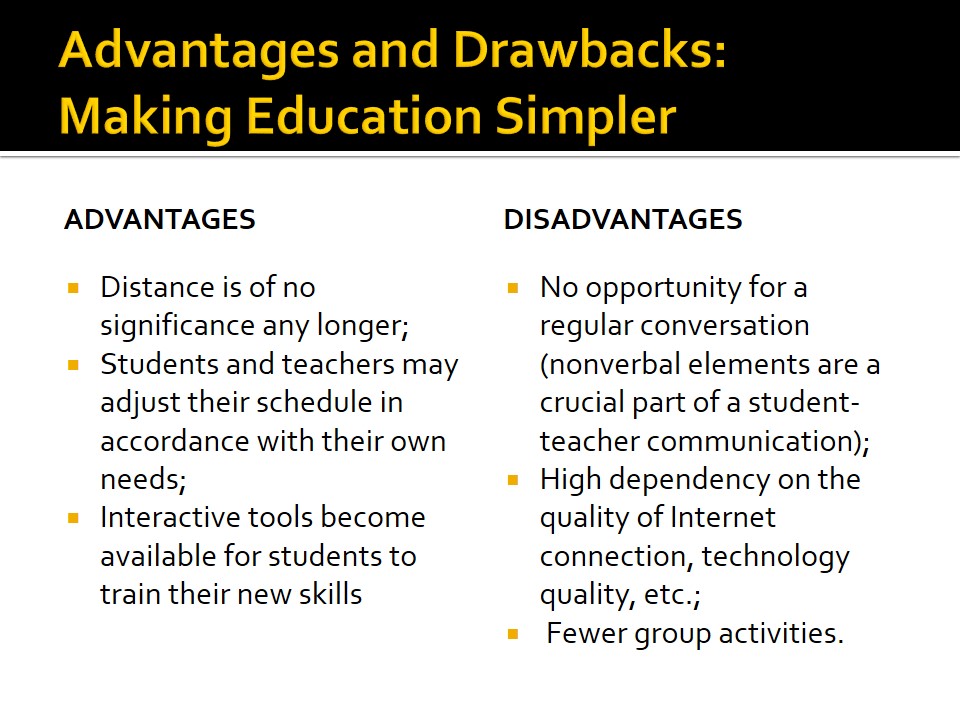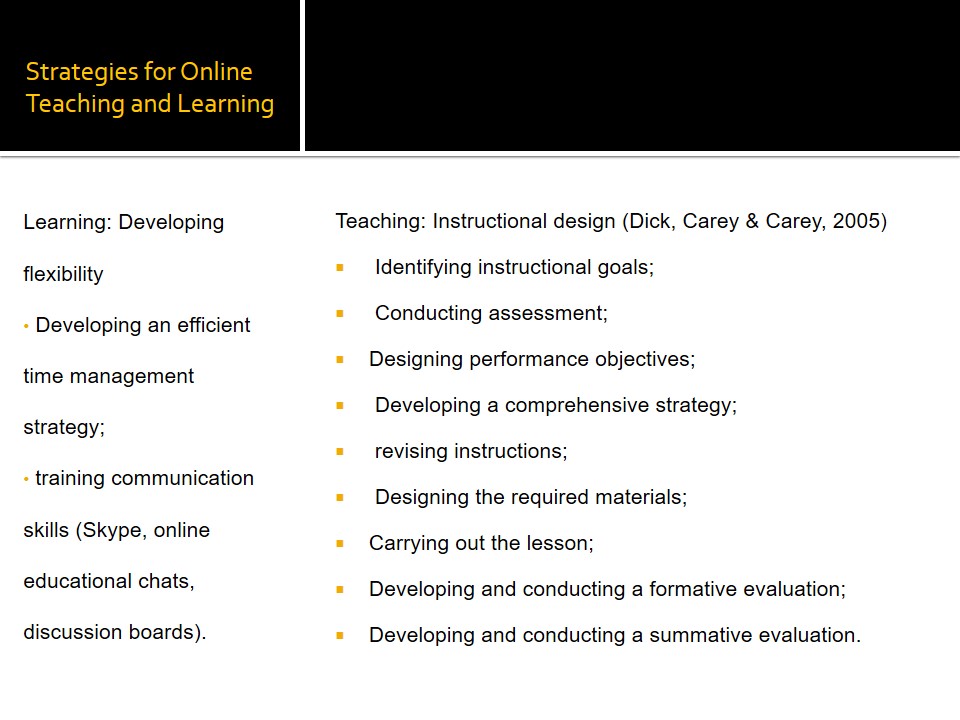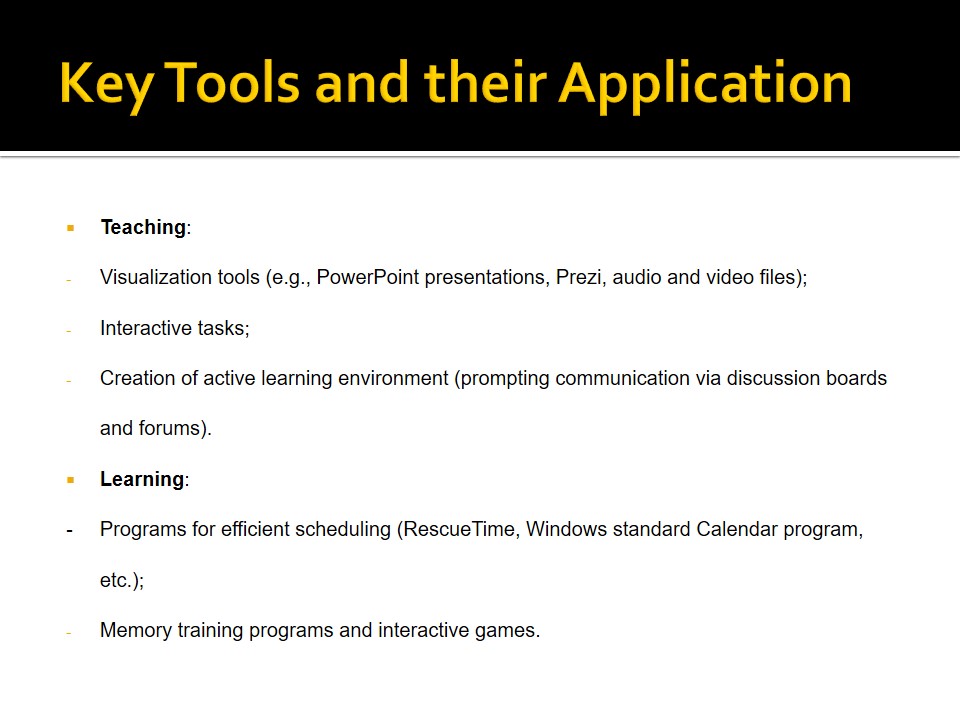Definition and Examples: Online teaching and Learning
Online teaching is an attempt to develop students’ cognitive skills through online communication.
Online learning is a learning option, which allows for students to develop a more adequate time management strategy by attending courses virtually.
Online teaching and learning has become a common practice in the 21st century. However, online teaching and learning is adequate mostly for independent learners and, therefore, can only be used as an addition to the primary and secondary schools’ programs (Best practices in online teaching strategies, 2009).

Advantages and Drawbacks: Making Education Simpler
- Advantages:
- Distance is of no significance any longer;
- Students and teachers may adjust their schedule in accordance with their own needs;
- Interactive tools become available for students to train their new skills
- Disadvantages:
- No opportunity for a regular conversation (nonverbal elements are a crucial part of a student-teacher communication);
- High dependency on the quality of Internet connection, technology quality, etc.;
- Fewer group activities.

Strategies for Online Teaching and Learning
Learning: Developing flexibility:
- Developing an efficient time management strategy;
- training communication skills (Skype, online educational chats, discussion boards).
Teaching: Instructional design (Dick, Carey & Carey, 2005)
- Identifying instructional goals;
- Conducting assessment;
- Designing performance objectives;
- Developing a comprehensive strategy;
- revising instructions;
- Designing the required materials;
- Carrying out the lesson;
- Developing and conducting a formative evaluation;
- Developing and conducting a summative evaluation.

Key Tools and their Application
- Teaching:
- Visualization tools (e.g., PowerPoint presentations, Prezi, audio and video files);
- Interactive tasks;
- Creation of active learning environment (prompting communication via discussion boards and forums).
- Learning:
- Programs for efficient scheduling (RescueTime, Windows standard Calendar program, etc.);
- Memory training programs and interactive games.

Key Issues and the Means to Overcome Them
- Problem:
- Unavailability of the required tools, devices or equipment;
- Lack of skills required to carry out the specified activities;
- Lack of enthusiasm from the students towards participating in online lessons.
- Solution:
- Providing additional funds for the needs of teaching staff and the students from a low income family background;
- Creating separate training courses for teachers and students;
- Integration of unique and fun online activities.

Reference List
Best practices in online teaching strategies. (2009). Hannover, DE: The Hanover Research Council. Web.
Dick, W., Carey, L. & Carey, J. O. (2005). EDTC 6321: Instructional design. Web.